The Mississippi River is the third largest water basin in the world and the second-longest river in North America. It starts at Lake Itasca in Minnesota and comes to an end in the Gulf of Mexico. The river Mississippi was originally called Misi-ziibi by the Anishinaabe people. The French people developed their name from this and called the river Messipi, which the name Mississippi originates from.
Mississippi has an entire length of 2,340 miles and a total surface area is 1.2 million square miles. The Mississippi River is arguably one of the most famous rivers in the world and consequently, there are a lot of questions about it. One of the most commonly asked questions concerns the river as a transportation route. This article investigates how long it takes to travel the Mississippi River.
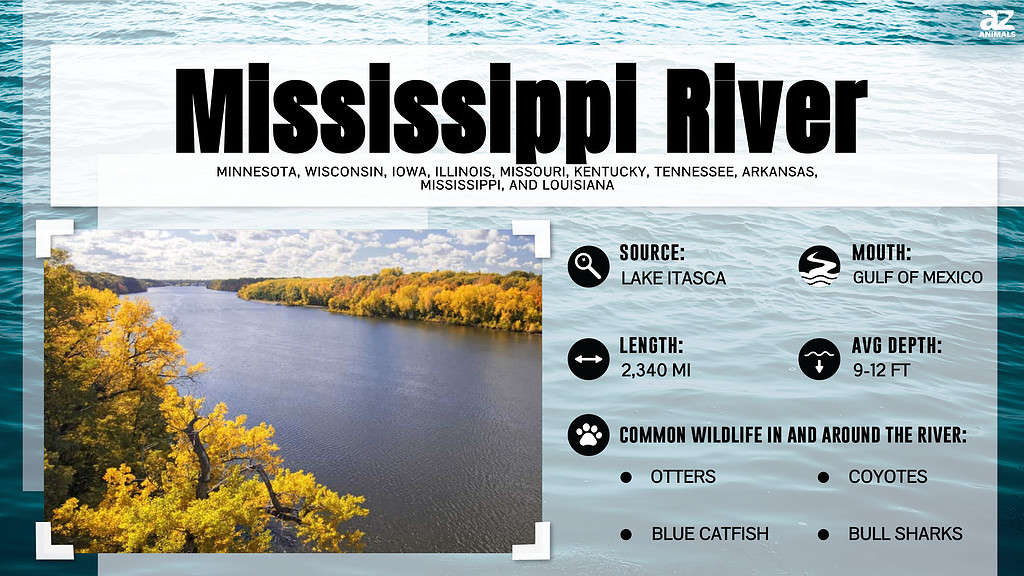
Mississippi River and Transportation
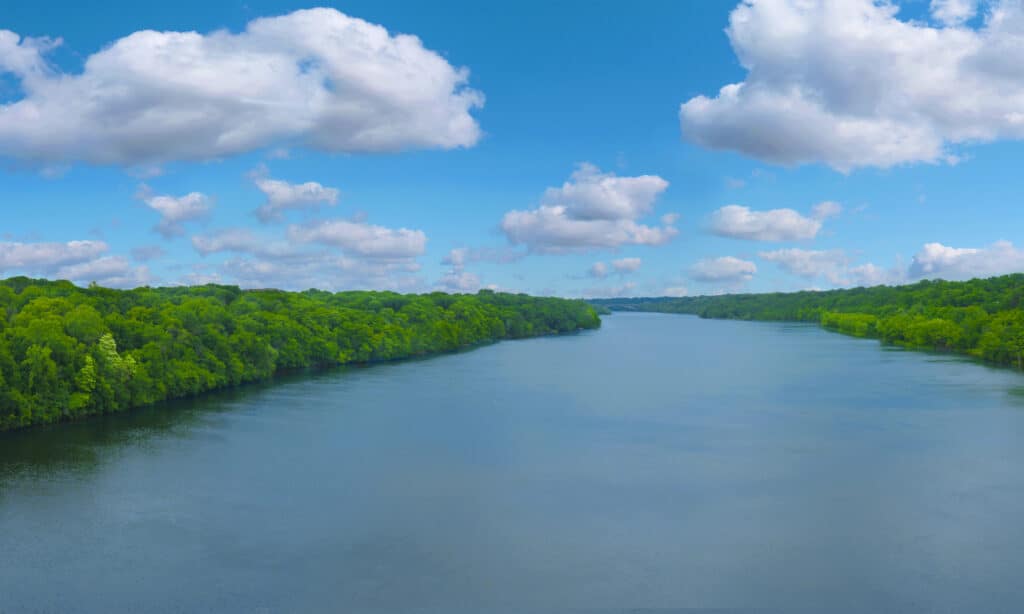
The Mississippi River has been used as a transportation route for many years.
©Milen Mkv/Shutterstock.com
The Mississippi River is an important part of the United States’ economy. The river is a major tourist location. According to the National Wildlife Federation, each year, tourism increases by at least 3 percent! More than 12 million people visit the Upper Mississippi River recreationally each year. The Mississippi provides drinking water to millions of people and is also a source of hydroelectricity. It is also used for the transportation of various goods such as agricultural products, iron, steel, and various resources.
The Mississippi River’s widest point is located in Alton, Illinois where the Missouri River and Mississippi meet at a confluence. Lake Winnibigoshish is the meeting point and is located near Bena County, Minnesota. According to the National Park Service, its maximum width is 11 miles or 58,080 feet. Lake Winnibigoshish has transit routes that allow travelers to journey through. The widest navigable section in the shipping channel of the Mississippi is Lake Pepin, where the channel is approximately 2 miles wide.
How Long Does It Take to Travel the Mississippi River?
The answer to this question heavily depends on your mode of transportation. However, irrespective, we’ve got you covered. Here are the timelines for travel on the Mississippi river by various forms of transportation.
How Long Does It Take to Paddle the Mississippi River in a Kayak?

It would take 3- 4 months to paddle the Mississippi River in a kayak.
©Sean Pavone/Shutterstock.com
The quick answer to this question is 3 to 4 months. If the river is 2,340 miles and you paddle at 4 miles an hour, you’d be paddling for about 585 hours. Average skilled kayakers can cover about 20 miles in a day which means you’d be paddling for at least 117 days, equaling almost four months.
However, traveling by kayak is for experienced kayakers only since the river can get quite deep. The deepest point in the Mississippi River, according to the Mississippi Valley Traveler, is close to Algiers Point where it is up to 0.038 miles or 200 feet deep. Navigating such depths might be impossible for anyone who’s not professionally trained.
How Long Does It Take A Drop of Water To Travel the Mississippi River?
It takes 90 days for a single drop of water to travel through the entire Mississippi River.
How Long Does It Take To Travel The Mississippi River By Boat?
The amount of time spent depends on the type of boat used. However, it can take as little as 14 days and up to 50 days. Non-power boats would take longer.
How Long Does It Take To Swim The Mississippi?
In 2002, Martin Strel swam the entire Mississippi. He did it in 68 days! Only a few other people have achieved this feat. You can swim safely in certain parts of the Mississippi River but not many people can swim the entire river. At Lake Itasca, which is the headwater of the Mississippi River, the water flows at a speed of 1.2 miles per hour. Due to this, it takes water three months to flow from its headwaters to the gulf in Mexico. Mississippi’s waters shouldn’t be underestimated. Each year, deaths by drowning are reported.
What Dangerous Animals Are In The Mississippi?

Mississippi National River and Recreation Area covers 54,000 acres of land
According to the National Park Service under the U.S. Department of Interior, there are at least 145 species of amphibians and reptiles that regard the Upper Mississippi River and its environs as home. Mississippi, in addition to being a significant part of the economy, plays host to more than 50 species of mammals, as well as up to 60 documented species of mussels. Some of these animals are dangerous and capable of inflicting serious harm and even claiming lives. Here are 6 dangerous and venomous animals of the Mississippi River.
6 Dangerous And Venomous Animals Of The Mississippi River
Eastern Diamondback Rattlesnakes
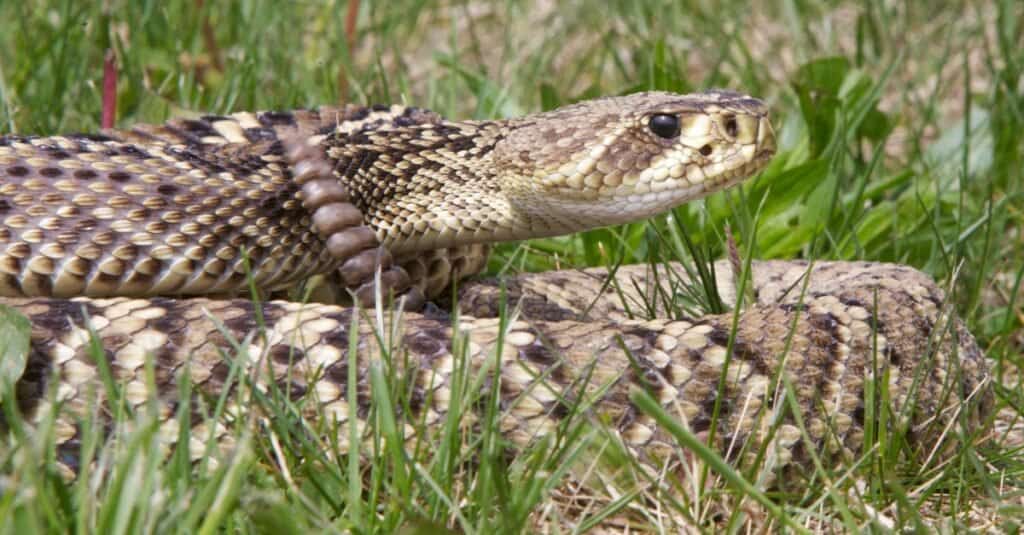
Eastern diamondback
rattlesnakes
are venomous pit vipers found in the Mississippi.
©iStock.com/NajaShots
Eastern diamondback rattlesnakes are blackish-gray to muddy gray and even olive green. They are highly venomous snakes with venom that contains hemotoxins which attack the blood cells of their victims. These snakes do not like coming in contact with humans and bite when they feel threatened or attacked.
Timber Rattlesnakes
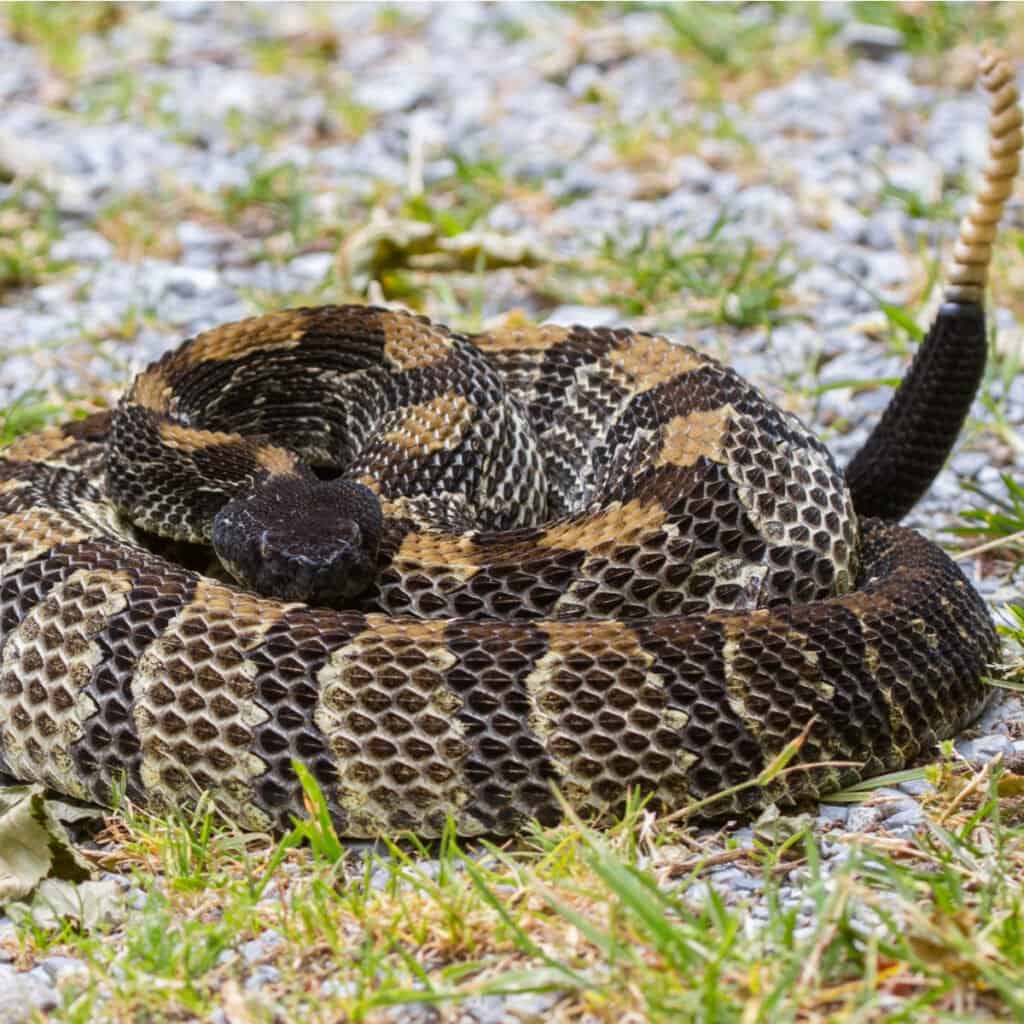
Timber rattlesnakes are considered one of the most dangerous snakes in North America.
©Frode Jacobsen/Shutterstock.com
Timber rattlesnakes are pit vipers that are colored gray, tan, or yellow, and have V-shaped tails. Also known as canebrake rattlesnakes, these snakes are considered one of the most dangerous snakes in North America. Their venom contains canebrake toxin which causes the quick spread of the venom in the human body and can cause death.
Copperheads
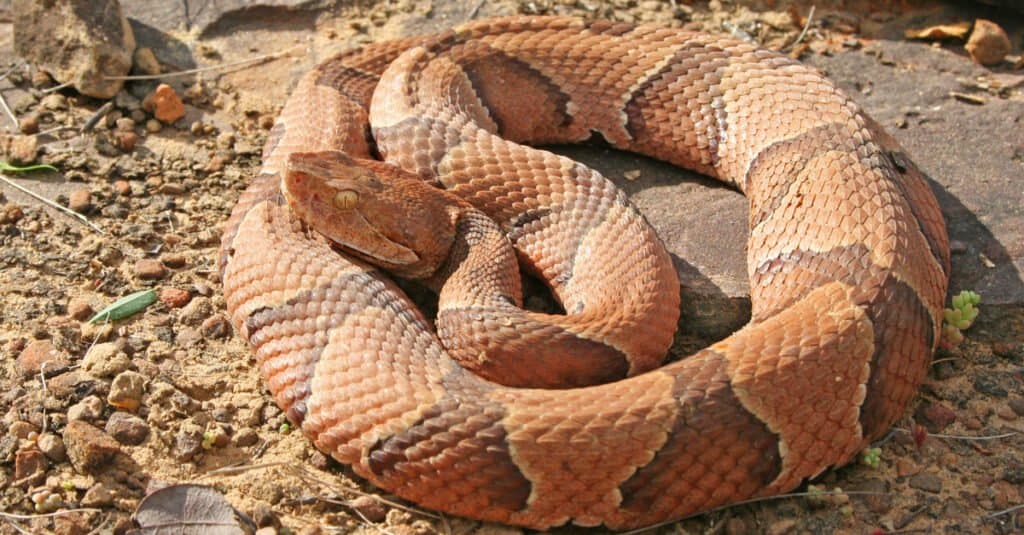
Copperheads bite more people than any other snakes in the USA.
©Creeping Things/Shutterstock.com
Copperheads are venomous pit vipers known to bite more people in the USA than any other snake. They have tell-tale orange or copper heads that can help with identifying them. Copperheads are medium-sized snakes. They have heat-sensing pits that look like a second set of nostrils and help them hunt, like all pit vipers.
Eastern Coral Snakes
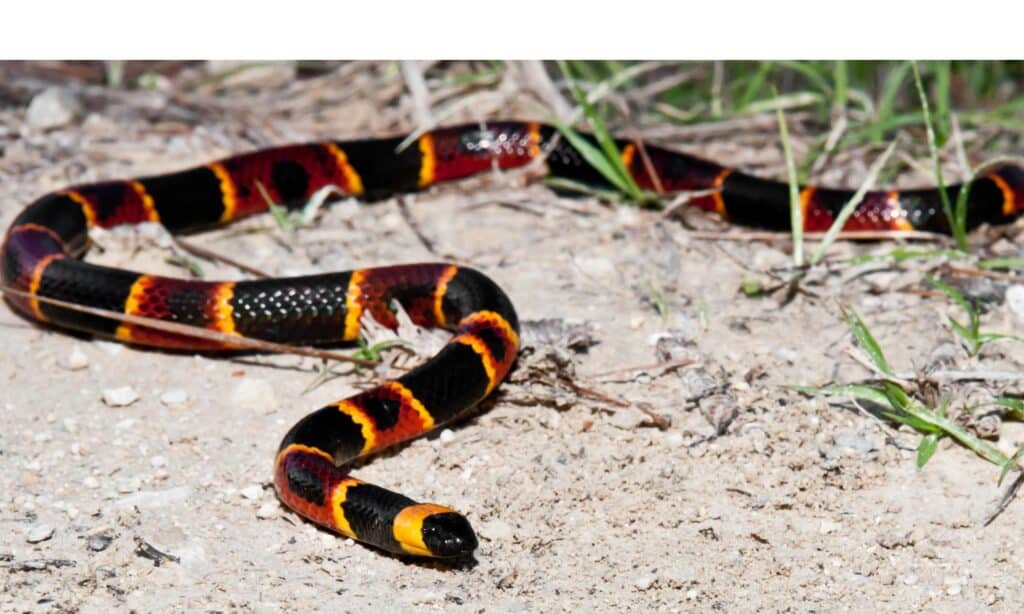
Eastern coral snakes are beautiful but highly venomous elapid snakes.
©iStock.com/JasonOndreicka
Coral snakes are a group of elapid snakes known for their colorful skins. These snakes are as deadly as they are beautiful. The coral snake’s venom contains neurotoxins that cause paralysis and respiratory failure. According to Dr. Peterson, an instructor at Oregon State University College of Veterinary Medicine in Corvallis, Oregon, their maximum venom yield is 20 mg, making them strong enough to kill 5 humans with a single bite.
Cottonmouths
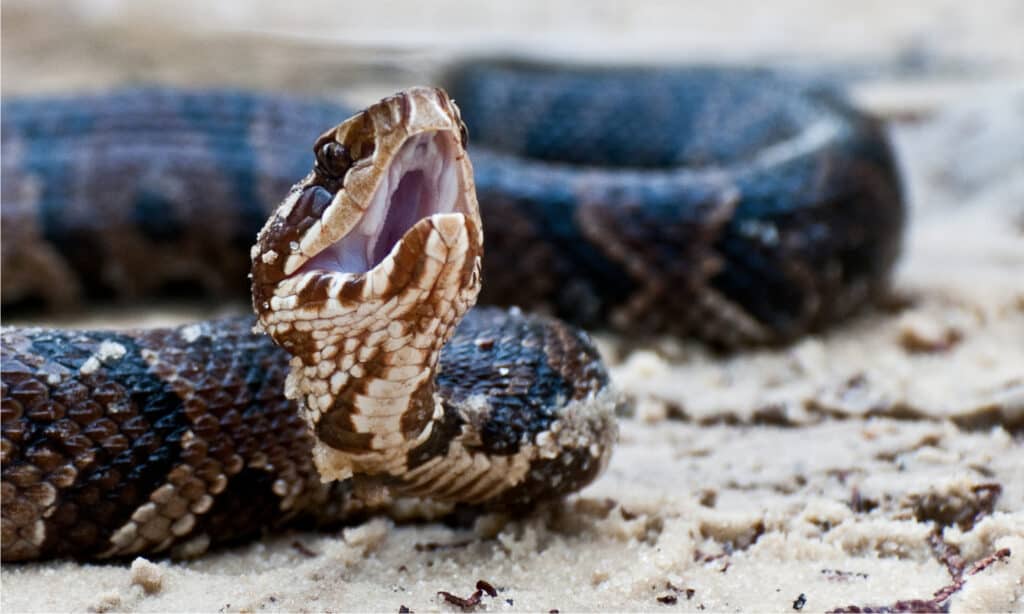
Cottonmouths are pit vipers with venom strong enough to kill 2 humans with a single bite.
©Jay Ondreicka/Shutterstock.com
Cottonmouths are pit vipers strong enough to kill 2 humans with a single bite. They measure 26 to 35 inches approximately. Cottonmouth snakes are most usually black with markings over their bodies and heads. They also have crossbands across their whole bodies. Cottonmouth snakes venom contains hemotoxins that break down blood cells and stop blood from clotting.
The photo featured at the top of this post is © Sean Pavone/Shutterstock.com
Thank you for reading! Have some feedback for us? Contact the AZ Animals editorial team.







